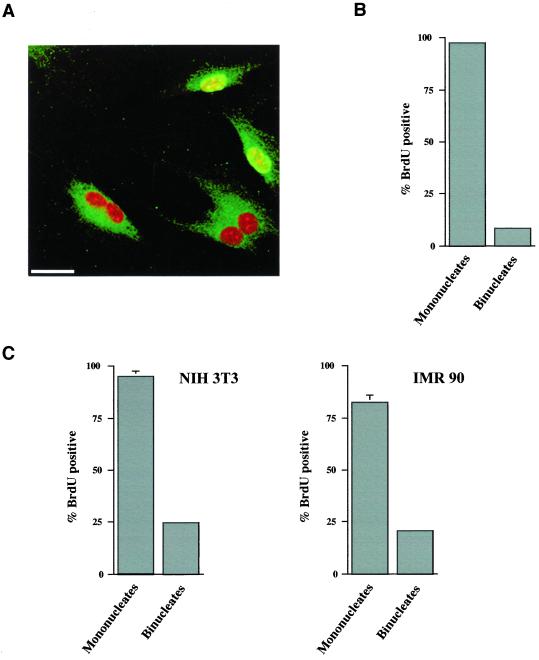Figure 4.
DCB induces cell cycle arrest only in cells that become binucleate following short-term exposure. (A) REF-52 cells were exposed to 10 μM DCB for 5 h without pre-synchronization, and they were then cultured for 25 h in medium containing 10 μM BrdU but not DCB. As shown by an immunofluorescence image, mononucleate, but not binucleate, cells incorporate BrdU (green) following 5 h treatment with DCB. Mononucleate cells are distinguishable from binucleate cells by a counterstain of nuclei with propidium iodide (red). FITC background was enhanced to better distinguish between mononucleate and binucleate cells. Bar, 25 μm. (B) Quantitation of the percentage of mononucleate and binucleate REF-52 cells that incorporate BrdU in 25 h following a 5 h exposure to DCB. (C) Similar analysis of random cycling NIH3T3 and IMR-90 cells was conducted following exposure to DCB for 10 h and then BrdU for 24 h. Incorporation is specifically suppressed in binucleate cells, indicating cell cycle arrest in cells that become tetraploid due to inhibition of cytokinesis by DCB. For each condition, at least 300 cells were counted. Values shown are mean values of three counts. SDs were as stated in the text.

